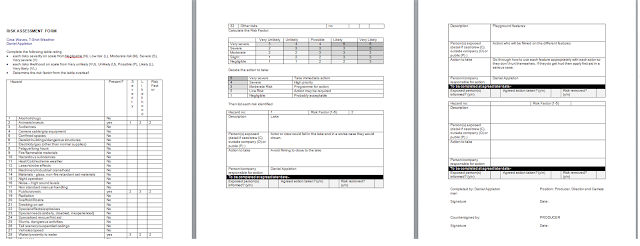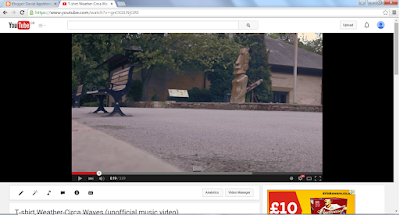Live Music Event
How it works
It is very hard to film live music with just one single camera. By using multiple cameras you can capture the entire event at once. To film a live music event you would have to place multiple cameras focusing on different subjects. The usual subjects to focus on are the musicians themselves. If it is a band then it is common to have a camera on each member. Sometimes one camera can be used to cover multiple members. If they are not stationary then they move to different points where they can cover different members or subjects of interest. When the camera is moving, a different camera will be stationary and covering something else. This footage will be used whilst the other cameras adjust. If you are covering a solo artist then you can still use multiple cameras. There can be more than one camera focusing on the performer, just at different angles. When filming a music event, the focus does not have to be entirely on the singer or band member. It is good to get shots of the venue and the crowd. This makes it less boring to watch as you are not seeing the same thing over and over again. By filming the crowd you can see their reaction which would look good on the band as it shows people enjoy them, it is especially effective if it is a large crowd as there would be lots of different perspectives to film from. You can also use a camera to get shots of the venue. This is effective for getting across the performers image and style. If the venue is different to others and not like the typical popular venues then it can make the artist look unique.
| Image from: http://odellbrewing.com/event/live-music-with-greyweather/ |
| Image from: http://themmf.net/2012/01/10/mmf-event-how-to-book-a-tour-16th-january-2/#.VkTsCzZOfIU |
Sports coverage
Sports coverage is basically recording a live sporting event. This can be any sport. With sports coverage, multiple cameras are used to ensure the whole event is captured. As it is live, there is no telling what will happen and where it will happen so by using multiple cameras you can make sure that no matter where it is there will be a camera to pick it up. In most sporting events there is one camera that captures a long shot of the whole, or majority, of the event. This is to show everything that is happening at the moment in time. If there is nothing particularly interesting going on then this shot is usually used so the viewer can see everything. There are other cameras used that are closer to certain targets. These targets are where there is expected to be action. For example in a football match there will be a camera close to the goal because there is expected to be goals scored and in a rugby game there is a camera next to the in goals to capture when someone scores a try. In sporting events like rugby and football where there is a large area that the event takes place, there will be other cameras in different areas of the grounds to capture reaction shots or give different angles to the action. It is very common to show the reaction of the players or the crowd when something happens. This is used to make the coverage a bit more interesting to watch as it would get boring watching one camera repeating the same shot over and over. In some sporting events there is a camera focusing on the outside of the stadium. This is effective if the stadium is particularly big as it emphasises the scale of it. This can also be used to show fans entering the stadium. When faced with a camera, fans often react excitedly which gives a positive outlook on the game ahead.
| Image from: http://www.irrawaddy.org/sports/euro-2012-germany-portugal-win-holland-go-out.html |
These pictures are different angles that can be used in sporting events. The top image is from a rugby game which is showing the whole game and the bottom image is from a football match that is focusing on the action.
What defines them as multi-camera?
Both live music and sports coverage are multi camera because they require multiple cameras to record the events. If they both used a single camera then they would get very few views.. It would be boring to watch and it would get frustrating for viewers to watch sports coverage when they are missing all the action.
The Similarities
One of the similarities between music and sports coverage is the crew needed. This is the same with most multi camera projects. There has to be multiple camera operators in both sets as there is multiple cameras being used. If there is no one to operate and alter a certain camera then it won't pick up what it needs to and might miss out on some action. Another important role in both sets is a vision mixer. Their job is to watch everything being recorded by each camera and alternate between which shot is being aired. This is important for both sets as they are both live so they cannot be edited afterwards. The vision mixer has to be aware of what each shot is picking up and pay close attention to what is going on. Viewers don't want to miss anything so they need to ensure they don't. Another similarity is that both music and sports focus their cameras on similar subjects. For example, both of them often turn one camera on to the crowd or audience for effect. The reaction shots look positive on the band or team as well as the amount of people in the audience. This makes it look as though what is being recorded is popular and more people will then watch the recording if they think it is popular or mainstream. The shots of the crowd are also useful in these productions as the viewer is not then seeing the same thing over and over again.
The Differences
Although they both use similar techniques, live music and sporting events themselves are very different. One big difference is the equipment that has to be used. A big downside to filming sporting events is the majority of sports are filmed outside. This means you would have to purchase more equipment to assist the original equipment in case of bad weather like rain. You can't film with rain all over the lens and if the equipment gets wet there is a risk of it breaking. That being said there are some outdoor music events however most of these take part in the summer or in hot countries where the weather is fairly predictable whereas sport takes place all year in every country. For this reason, sport is probably more expensive to film than music. The money can soon be made back up though as there is always sport on TV. Even if you film for a single team or club, they would most likely still want you to film once a week at least. With music, there is a lot less opportunities. You could probably not earn a living from filming one artist as they will not always be performing live gigs. There will always be people performing but not many will pay much as the majority will just be smaller artists who play in small venues. There are so many sports that are popular so you could easily find a large venue to film at but in music you would struggle to find work unless you where on a big label.
Pros and Cons
An advantage of using multi camera for these events is that you can film everything. They are live so you only get one chance to film them and multi camera ensures everything is captured on camera. This also means you can film multiple subjects which you wouldn't be able to do with a single camera. You do not have to limit what you film. Another pro is that you don't have to spend time editing. Multiple cameras mean you cut whilst filming. With single camera, you have to stop filming and then change your subject or the alternative would be to move from subject to subject however this wouldn't look good as it would be blurry and there will be a lot of useless footage. With multi cameras you can point a different camera at the next subject and just switch to it. As both music and sports are both live you would have no time to edit so the result of using single camera would look horrible which is why it is better to use multi cameras.
Some of the disadvantages of using multi cameras include the cost. Using more cameras will obviously be more expensive as you have to pay for more cameras. This also means you will have to buy any individual equipment to go with certain cameras such as tripods. There is also the cost of things like audio and lighting. When filming live music and sports you have to cover a wide area so you will need to buy more audio and lighting equipment to make sure that no area is missed out. You cannot get away with using one large piece of lighting equipment as it may not look effective in every camera therefore you will need to buy extra lights to make sure each shot is suitable to view. Another disadvantage is there is less flexibility. You can only pull off certain kinds of shots, you wouldn't be able to film using more complex shots such as a POV shot as there is a risk of getting your own equipment in the shot. When it comes to the live events this is not as much of a problem however in a live event there is generally not much room to do these kind of shots anyway.








